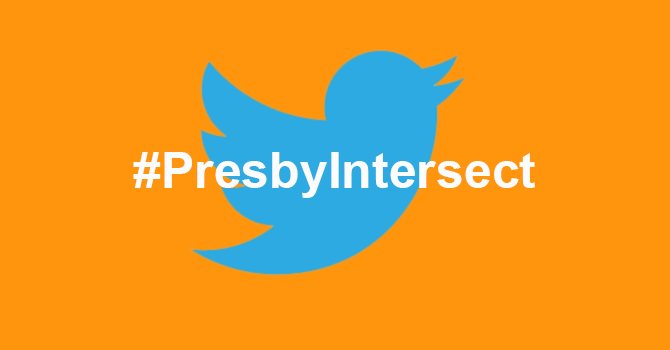My entrance into new media began with blogging on Xanga in 2003. It was a way to procrastinate writing a senior thesis during my last year in seminary. My posts were short, sometimes quotations from books, sometimes little reflections about my life -- newly married, in the middle of exams and books and papers, getting ready to search for my first call.
When Twitter first launched in March 2006, I was making plans to begin my Th.M. program at Princeton Theological Seminary. It wasn’t until almost a year later, during a class on Tillich’s theology, when Adam, an M.Div. student sitting next to me, encouraged me to jump on.
I hesitated. The platform, the purpose, the timeline that seemed to scroll by so quickly -- it was intimidating. Everything that I knew was Myspace and Facebook. I might have even still been blogging at Xanga.
But I figured, why not? When I signed up, Adam was my first follower, and his tweet to his followers was something along the lines of, “Hey, let’s welcome Mihee to Twitter.” I felt a little jolt of excitement.
Many years later, the various ways to interact online are ubiquitous, and it is an understatement to say they are part of the landscape of our culture, whether through social media or gaming, or through apps or forums like Reddit.
They are a means to tell stories, to build relationships and networks, to educate and learn, to lift up causes. They enhance and mediate. And in many ways, they replace traditional forms of communication.
The hashtags used to organize topics and trends, particularly on Twitter, have become so commonplace that they are now used in other platforms (Facebook, Instagram) as well -- and indeed, symbolically, in texts, emails and even verbal conversation.
People can collect thoughts on a particular topic -- anything from TV shows (#GreysAnatomy) to this past year’s election coverage (#electionnight2016) to silly conversations (#holidaypickuplines).
Many groups also use hashtags to host a teach-in on a topic for a specified amount of time or to “gather” regularly around a topic.
For example, this past June a group of about a half-dozen Presbyterians across the country who are active on Twitter simply messaged each other and talked about the possibility of gathering more regularly.
We wanted to talk about our faith, and specifically Presbyterian identity, through an intersectional lens. So #PresbyIntersect was created. Since then, we’ve met weekly and invited many others to talk through topics ranging from police brutality and violence to allyship to trauma to the generational gaps.
Each week we agree on a topic, put out a promotional image that gives the date and theme, and then collaborate and work from a Google document to prepare questions to ask the community.
Initially, this was intended to be a time to engage justice issues and to share information and resources. But I’ve noticed a shift already.
It has become a safe haven for discussing all our questions about and struggles with what is happening more widely in the world, as well as the impact of those things on our communities. We want to be faithful, we want to engage, and we need a way to invite people from all walks of life and perspectives into the conversation.

I’ve found that the faith community of #PresbyIntersect helps us live out a sort of digital diaspora where we intentionally inhabit an ethos of reconciliation and wholeness. It can become a creative and radical site for integration.
Sometimes that wholeness looks different from what we expect. But it’s always rooted in and centered on storytelling. As we constantly enact that safe space in all the venues and platforms of our lives, we begin to broaden our understanding of what is holy and sacred in our work as church.
Participating in new media becomes a practice of friendship. It gives us as the church occasions to live sacramentally toward each other by enacting and embodying signs of grace that express the story that gives meaning to our lives.
This theme of friendship keeps coming up for me lately, and I see the necessity of leading with it in all my work -- whether through social media connections or in campus ministry.
In May of this year, I went on a pilgrimage with a group of campus ministers and conference staff to the Taizé community, where I picked up a book written by one of the brothers called “Friends in Christ: Paths to a New Understanding of Church.”
In it, Brother John highlights the importance of a “culture of belonging”: “The capacity of the church to communicate the Gospel stands or falls with its identity as an inclusive community of friends. … In a society where doing, organizing, and achieving reign, how many congregations are aware that, along with deepening a relationship with Christ, building friendship among the members should be a priority?”
New media and digital technologies -- spaces like Twitter -- can be a way to facilitate this culture of belonging, where friendship is experienced in new ways. I have connected through social media with many new people from different contexts, people I normally wouldn’t interact with face to face, and have learned so much about how they enact their faith in their communities.
Hearing their stories has been encouraging, helping me see the beauty in our different experiences. Participating in #PresbyIntersect and other digital forums has also helped me be in intentional and thoughtful dialogue with colleagues and those with whom I have a deep friendship about how we can be the church.
Like many technologies or tools, new media can be abused or used irresponsibly. But it also offers a chance to make meaning and reach out in positive and hopeful ways. It invites us to consider how we might frame all our practices around a different kind of intimacy and connection -- a virtual culture of belonging.








